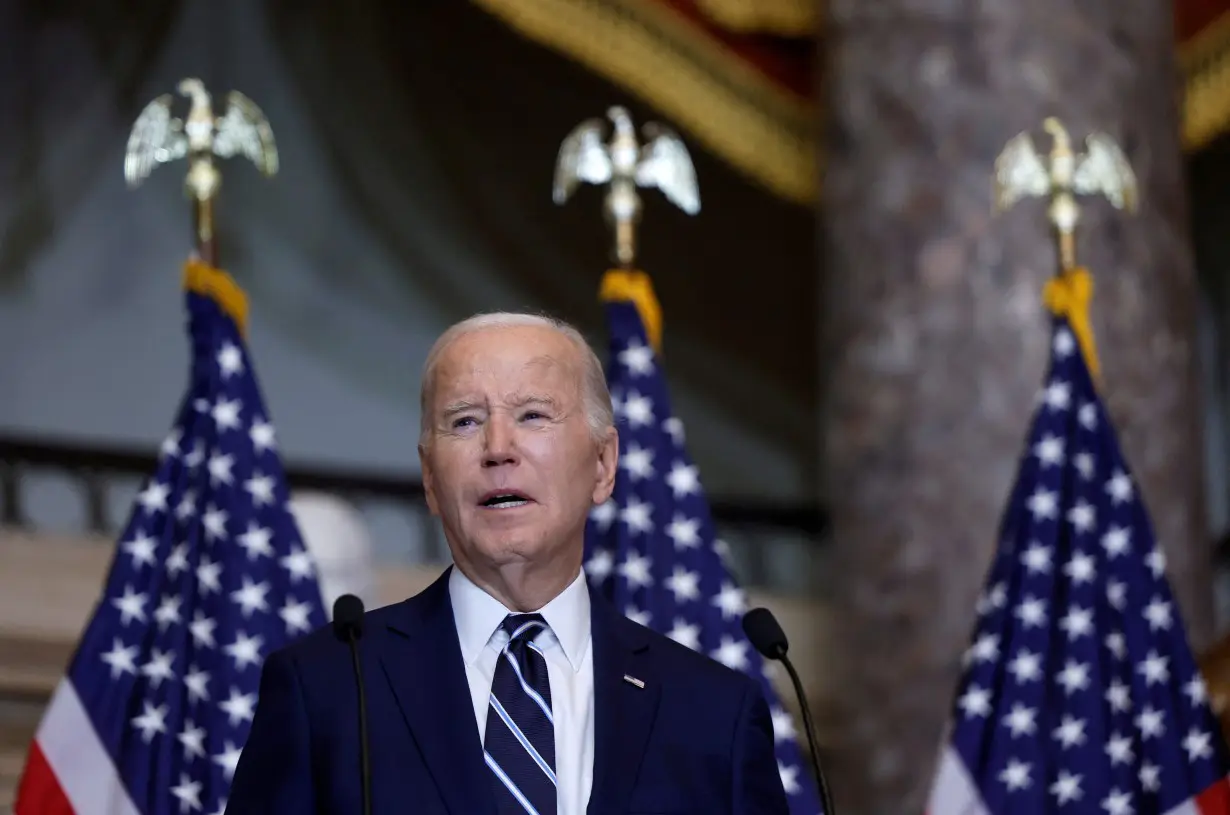By Trevor Hunnicutt
WASHINGTON (Reuters) - U.S. President Joe Biden will put forth his proposed U.S. spending plan on March 11, according to the White House Office of Management and Budget.
The document is a wish-list for how the government should spend its money in the fiscal year starting in October. It takes on special symbolic significance in a year when the Democratic president is seeking re-election.
Congress would need to pass Biden's proposals for them to take effect. Republican control of the House of Representatives, and particularly the influence of a hard-line group of Republicans loyal to likely Biden 2024 opponent Donald Trump, make agreement hard to come by.
The two sides are currently in a standoff over immigration policy, with Republicans holding up an October request by Biden for $61 billion for Ukraine as it battles Russian invaders and $14 billion for Israel in the aftermath of the Oct. 7 raids by Hamas.
Last March, Biden traveled to a union hall in the competitive election state of Pennsylvania to present a $6.8 trillion budget plan that included higher taxes on the wealthy and more spending from the military to healthcare subsidies.
That plan was never enacted in any way close to the way the president proposed, with Biden and congressional lawmakers engaged in tense negotiations over short-term spending deals to prevent the government from having to shut down.
Congress still has not fully funded the government for the current fiscal year, which ends in September.
Last month, they signed their third stopgap funding bill, known as a "continuing resolution" or "CR," which extends last fiscal year's spending levels until two deadlines of March 1 and March 8 for various government agencies. Lawmakers will need to pass additional bills providing for the full-year budget.
(Reporting by Trevor Hunnicutt; Additional reporting by Richard Cowan; Editing by Daniel Wallis)

 Trump has begun another trade war. Here's a timeline of how we got here
Trump has begun another trade war. Here's a timeline of how we got here
 Canada's leader laments lost friendship with US in town that sheltered stranded Americans after 9/11
Canada's leader laments lost friendship with US in town that sheltered stranded Americans after 9/11
 Chinese EV giant BYD's fourth-quarter profit leaps 73%
Chinese EV giant BYD's fourth-quarter profit leaps 73%
 You're an American in another land? Prepare to talk about the why and how of Trump 2.0
You're an American in another land? Prepare to talk about the why and how of Trump 2.0
 Chalk talk: Star power, top teams and No. 5 seeds headline the women's March Madness Sweet 16
Chalk talk: Star power, top teams and No. 5 seeds headline the women's March Madness Sweet 16
 Purdue returns to Sweet 16 with 76-62 win over McNeese in March Madness
Purdue returns to Sweet 16 with 76-62 win over McNeese in March Madness








